Pork Curry Recipes
Who doesn't love a delicious curry for a quick midweek meal or a special weekend treat? Whether you like it mild, medium or insanely spicy, a curry takeaway has long been a national favourite and we just can't seem to get enough of it!
A satisfying pork curry recipe is an easy and budget-friendly option that can be whipped up in minutes and is easily scalable to feed a family or a large crowd. Simple storecupboard ingredients like curry powder, garam masala, chilli powder, ground turmeric, coconut milk and even leftover roast pork can be transformed into a mouthwatering creamy pork curry that will have your guests coming back for more!
Come with us on a whistlestop tour as we explore the secrets of this much-loved dish and we rustle up a variety of showstoppers, from a mild and fragrant pork curry recipe to some spicier versions of a typical Indian pork curry.
Cook with a Scotch Difference
The secret to a truly magnificent dish lies in the quality of the ingredients used, and when it comes to meat, there is no higher accolade than meat branded with the Specially Selected logo, which represents quality, tradition and integrity in pork production.
Specially Selected Pork is the flagship brand of the pork industry in Scotland and it identifies meat from pigs that have been quality assured all of their lives. It is a promise of excellence!
The Journey of Quality Assurance
Specially Selected Pork is synonymous with meticulous care and attention. This journey begins with the farms where the animals are raised. Adhering to stringent welfare standards, these animals enjoy life in comfortable and natural environments, ensuring they are healthy and happy. This ethical approach to farming translates directly into the quality of the meat.
Strict Standards and Sustainable Practices
In Scotland, the standards for pork production are uncompromising. The farms involved in producing Specially Selected Pork adhere to rigorous checks, ensuring that every piece of meat is traceable, safe, and of the highest quality. This commitment extends to sustainable farming practices and safeguarding the environment for future generations while providing consumers with a product they can recognise and trust.
The Benefits of Cooking with Specially Selected Pork
When it comes to cooking, especially for dishes like a creamy pork curry, the quality of the meat is paramount. Specially Selected Pork, with its tender texture and rich flavour, elevates the dish to new heights.
Consistent Quality and Versatility
The consistency in quality with Specially Selected Pork means that every time you cook, you are guaranteed a product that performs. Whether you are slow-cooking a hearty stew or flash-frying a quick stir-fry, this pork maintains its integrity and enhances the overall dish.
Eat Pork for a Healthier Choice
The quality assurance of Specially Selected Pork means that you are buying meat that is free from unnecessary additives and raised in a way that respects animal welfare and environmental sustainability. Opting for leaner cuts of pork can be a great way to enjoy the taste and nutritional benefits of pork while keeping fat content lower.
Rich in Essential Nutrients
Pork is often referred to as 'the other white meat' and it is a highly nutritious and versatile protein source that has a myriad of benefits as part of a balanced diet. Pork is particularly rich in B vitamins, including B6, B12, thiamine, and niacin, which are crucial for energy production, brain function and red blood cell formation. It also contains important minerals such as zinc, iron, selenium and phosphorus. Zinc boosts the immune system, while iron is vital for blood health.
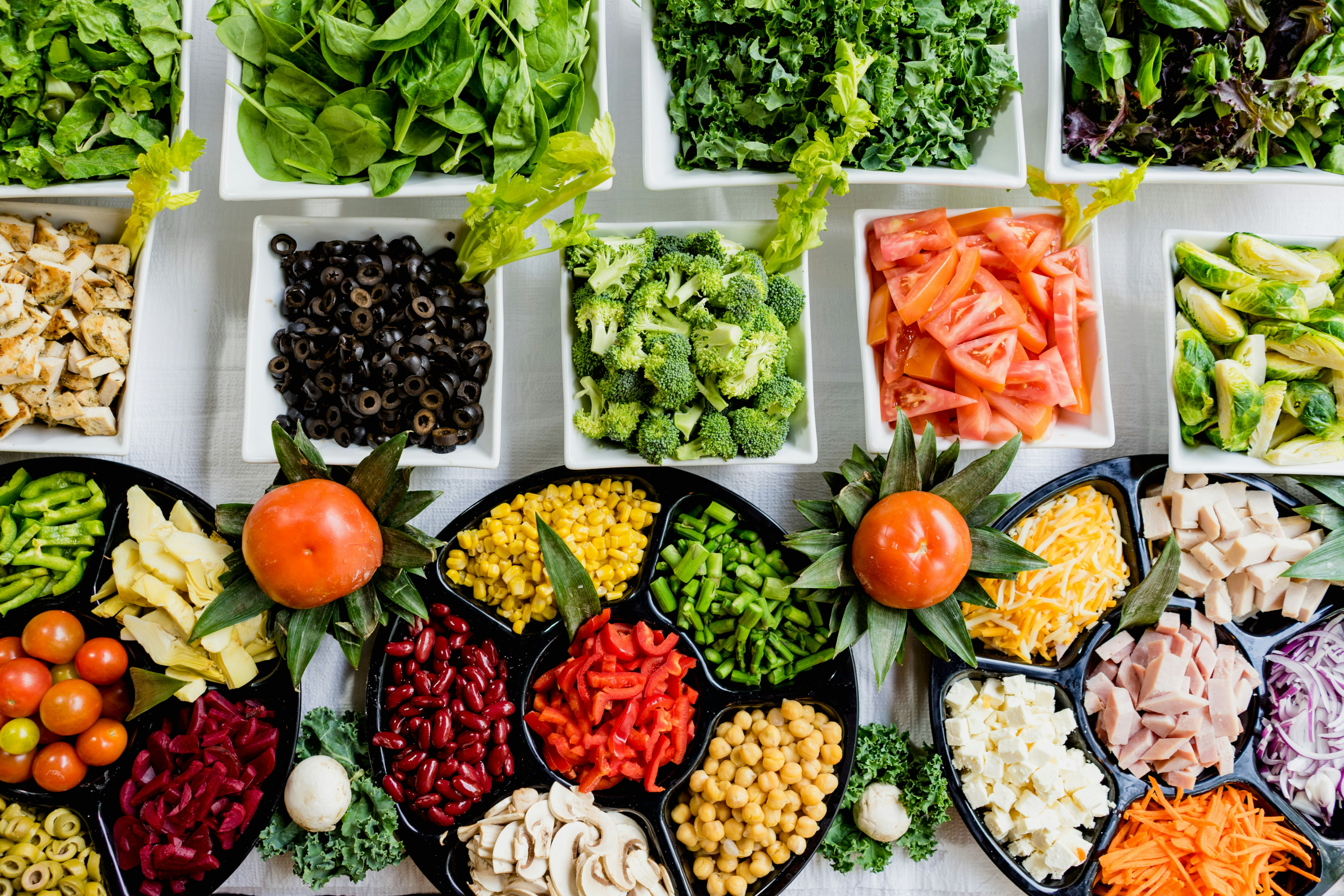
The Best Cuts of Pork for Curry Recipes
When preparing pork curry, opt for cuts that become tender as they cook for longer periods. Here are some of the top choices:
- Pork Shoulder: This is arguably the best cut for a simple curry recipe. It's rich in flavour due to its marbling of fat and becomes exceptionally tender when cooked slowly. The fat content helps the meat stay moist, making it perfect for slow-cooked, creamy and flavourful curries.
- Pork Belly: Known for its layers of fat and meat, pork belly is ideal for richer, more indulgent curries. The fat renders down during cooking, providing a luxurious texture and deep flavour.
- Pork Loin: If you prefer a leaner cut, pork loin steak is a great choice. It's less fatty than the shoulder or belly but still tender. It's best suited for quicker, milder curries where the curry sauce is the highlight.
- Pork Ribs: For a rustic, hearty curry, ribs can be an excellent choice. The bones add extra flavour to the overall curry, and the meat is satisfyingly hearty.
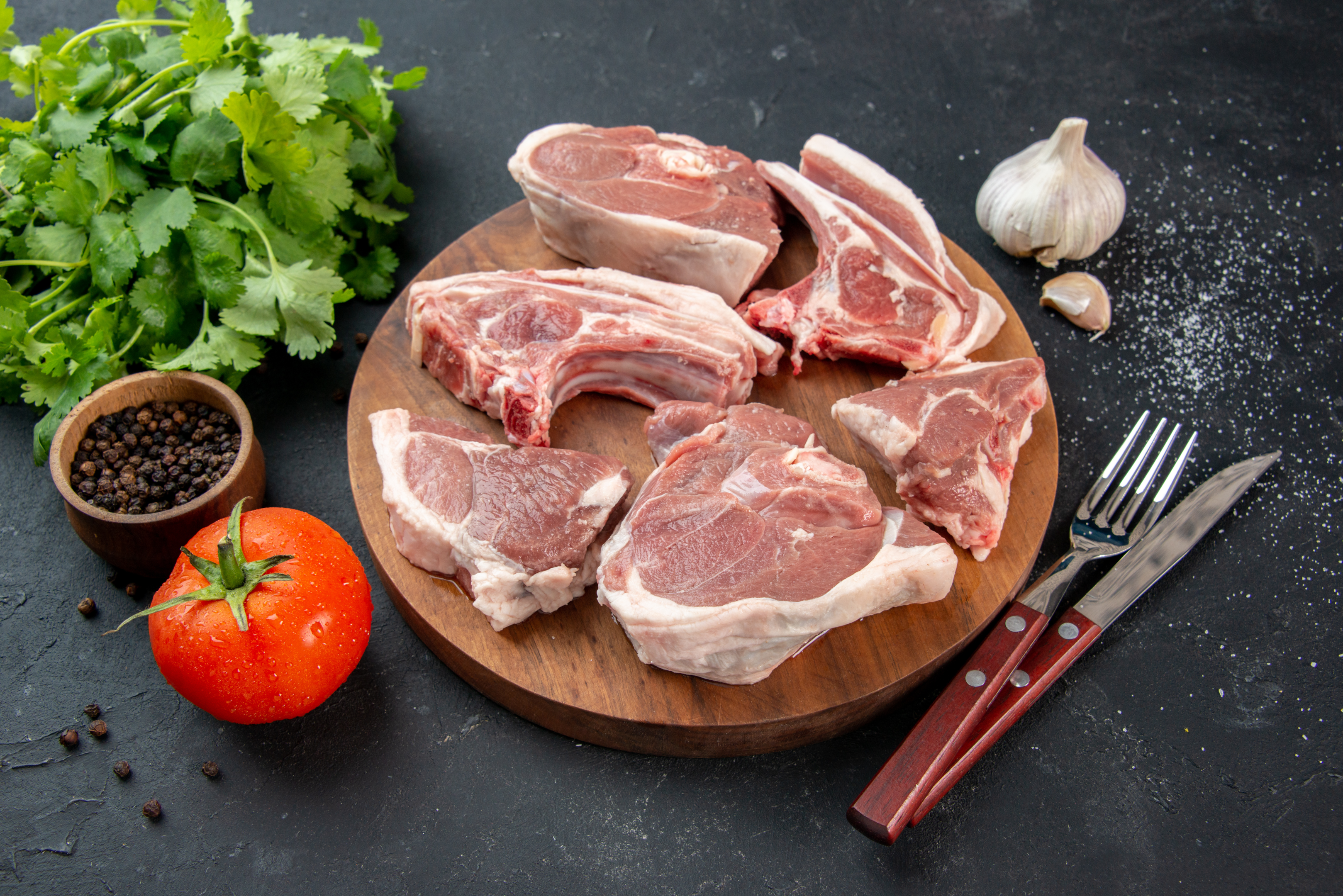
Each of these cuts brings something unique to your curry, whether it's the melt-in-the-mouth tenderness of the shoulder or the rich, deep flavours of the pork belly. Your choice will largely depend on the type of curry you are making and your personal preference for meat texture and fat content.
Cooking Tips and Tricks for the Perfect Pork Curry
Creating a mouth-watering pork curry is an art that combines the right techniques with a balance of flavours and spices. Whether you are a confident cook or a beginner, these tips and tricks will help you master the secret to a delicious pork curry.
1. Marinating:
This is an important step even in simple pork curry recipes for the following reasons:
- Enhances Flavour: Marinating pork not only infuses it with flavour but also tenderises it, especially important for leaner cuts like pork loin.
- Time Factor: For best results, marinate the pork for at least an hour, or even better, overnight.
2. Marinades:
- Acidic Components: Adding ingredients such as yoghurt, lemon juice or vinegar helps break down the proteins, making the pork more tender and balance flavours beautifully.
- Spices and Herbs: Use a blend of curry spices (e.g., turmeric, cumin, coriander, cumin seeds, fennel seeds, chilli flakes and of course salt and pepper) along with fresh herbs like coriander, curry leaves or mint for added flavour.
3. Cooking Times and Techniques:
The cooking technique largely depends on the cut of pork you are using for your pork curry.
- Slow Cooking: This method of cooking is ideal for tougher cuts of meat like pork shoulder that benefit from slow cooking, which makes them incredibly tender. Cook these cuts on low heat for several hours, allowing the flavours to develop and the meat to become fork-tender.
- Quick Cooking: This method is best suited for cuts like pork loin that cook faster and are great for when you are short on time. Cook these cuts on a higher heat for a shorter duration to avoid drying them out.
4. Balancing Flavours and Spices:
The secret of Indian cooking lies in the expert balancing of spices and flavours. Practice makes perfect and with a bit of know-how and experimentation, you will quickly master some amazing recipes.
- Taste as You Go: Regularly tasting and adjusting the seasoning is key to achieving a well-balanced curry.
- Spice Harmony: Start with a moderate amount of spices and adjust as needed. Remember, you can always add more, but you can't take it out!
- Chilli Heat: Consider the heat level of your spices, particularly with chillies, as different types have varying heat intensities.
5. Using Fresh and Quality Ingredients:
- Fresh, quality ingredients make a significant difference in cooking. Use fresh herbs and grind your own spices, if possible, for the best results.
6. Adjusting Consistency:
- If your curry is too thick, thin it out with a bit of water or stock. If it’s too thin, let it simmer to reduce and thicken.
7. Final Touches:
- A splash of lemon juice or a hint of sugar can balance out the flavours.
- Adding a dollop of cream, yoghurt or coconut milk can mellow out the heat and add richness.
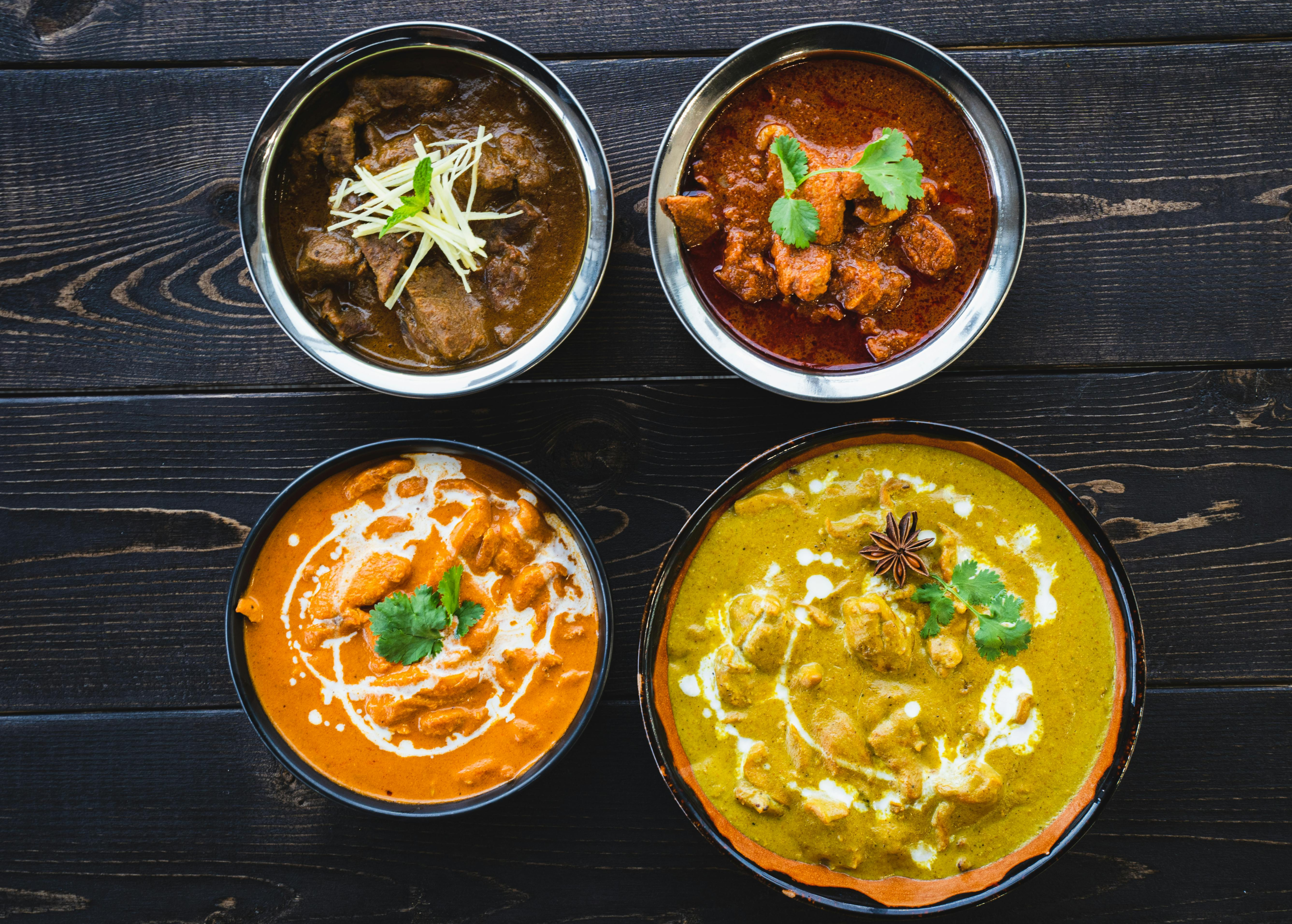
Three Favourite Pork Curry Recipes
With so many delicious recipes to choose from we are spoilt for choice, but we have chosen three old-time favourites to showcase the versatility of pork and its adaptability to pair beautifully with a myriad of spices.
Recipe 1: Classic Pork Curry
Taste the timeless flavours of a traditional Indian dish with this Classic Pork Curry. It's a perfect blend of tender pork, aromatic spices and a rich and savoury sauce. It is ideal for a comforting family meal or a casual dinner with friends.
Ingredients:
- 2 lbs (900g) pork shoulder, cut into cubes
- 2 tbsp vegetable oil or olive oil
- 2 large onions, finely chopped
- 4 garlic cloves, minced
- 2-inch piece of fresh ginger, grated
- 2 tbsp curry powder
- 1 tsp turmeric powder
- 1 tsp cumin powder
- 1 tsp coriander powder
- 1 can (14 oz) diced tomatoes
- 1 can (14 oz) coconut milk
- Salt and ground black pepper to taste
- Fresh coriander, chopped (for garnish)
Step-by-Step Cooking Guide:
- Marinate the Pork: Season the diced pork with salt, pepper, and half of the curry powder. Let it marinate for at least 30 minutes.
- Brown the Pork: In a large frying pan, heat the oil over medium heat. Add the pork in batches and brown on all sides. Set aside.
- Sauté Aromatics: In the same pan, add onions, garlic and ginger. Cook stirring occasionally until onions are translucent.
- Add Spices: Stir in the remaining curry powder, turmeric, cumin and coriander. Cook for a minute until fragrant.
- Combine Ingredients: Return pork to the pan. Add diced tomatoes and coconut milk. Bring to a slow simmer.
- Slow Cook: Reduce heat, cover, and let it simmer for 1-2 hours, or until pork is tender.
- Garnish and Serve: Garnish with fresh coriander.
Pairing Suggestions:
- Sides: Steamed basmati rice or warm naan bread.
- Drinks: A cold lager or a glass of Riesling complements the rich flavours of this classic curry.
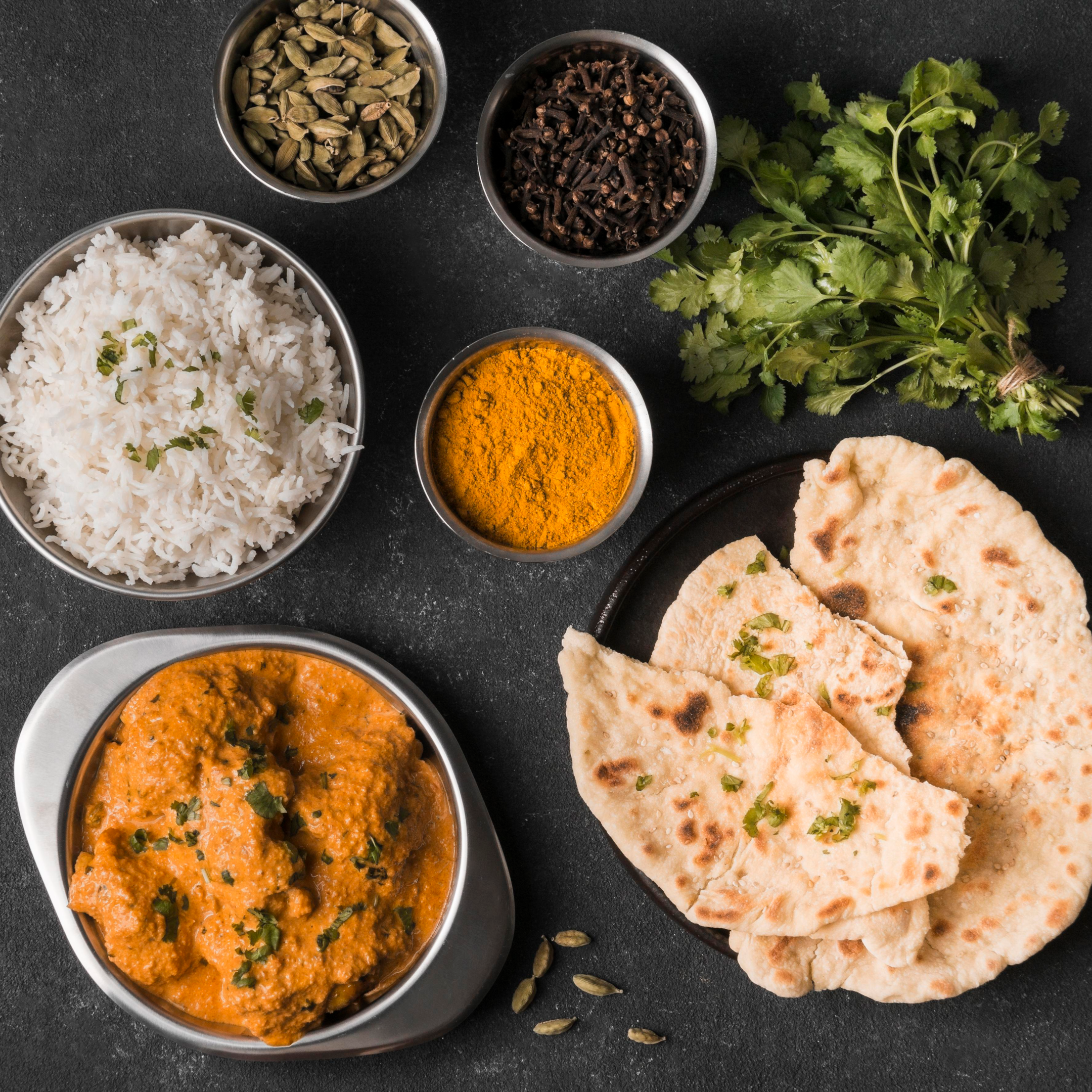
Recipe 2: Spicy Pork Vindaloo
Get ready for a fiery dish with this Spicy Pork Vindaloo. Originating from Goa, this dish is known for its bold spices and tantalisingly tangy and hot flavours.
Ingredients:
- 2 lbs (900g) pork shoulder, cut into cubes
- 3 tbsp vegetable oil
- 2 large onions, finely chopped
- 5 garlic cloves, minced
- 3-inch piece of fresh ginger, grated
- 2-3 tbsp vindaloo paste (adjust to taste)
- 1 tsp turmeric powder
- 1 tsp cumin powder
- 1/2 cup white vinegar
- 1 cup water
- Salt to taste
- Fresh coriander, chopped (for garnish)
Cooking Instructions:
- Marinate the Pork: Combine the diced pork with the vindaloo paste, vinegar and a pinch of salt. Marinate for at least 2 hours or overnight.
- Cook the Pork: In a large pan, heat oil and brown the marinated pork. Remove and set aside.
- Sauté Aromatics: Add onions, garlic, and ginger to the pot. Cook until golden.
- Add Spices: Stir in turmeric and cumin. Cook for a minute.
- Combine and Simmer: Return pork to the pot. Add water and bring to a boil. Lower the heat and simmer until the pork is tender.
- Garnish and Serve: Garnish with coriander.
Spice Level Adjustment:
- Adjust the amount of vindaloo paste to increase or decrease the heat level, or add a splash of cream, yoghurt, vinegar or a sweetener to adjust the taste to your liking.
Classic Pairings:
- Basmati rice: The fluffy texture and subtle nutty flavour of basmati rice is a perfect foil for the heat and intensity of vindaloo. For a Goan twist, try serving your vindaloo with coconut rice infused with cardamom and curry leaves.
- Naan or roti: These flatbreads are ideal for scooping up the curry and soaking up any sauce. You can even opt for flavoured versions like garlic naan or onion roti for an extra layer of taste.
- Papadums: These crispy lentil crackers can be used as edible spoons or crumbled over the curry for a textural contrast.
- Raita: A cooling yoghurt-based condiment with cucumber, mint, and spices, raita helps to tame the heat and adds a refreshing touch.
- Pickles: Indian pickles, such as lime pickles, red onions or mango chutney, offer a tangy and sharp counterpoint to the richness of the curry.
What goes into a Vingaloo Paste?
Here are the most common components found in a vindaloo paste:
- Dry Red Chilies: Provides the heat that vindaloo is famous for. Kashmiri chillies are often used for their vibrant colour and moderate heat.
- Coriander Seeds: Adds a warm, nutty, and slightly citrusy flavour.
- Cumin Seeds: Brings an earthy and somewhat spicy taste to the mix.
- Mustard Seeds: Contributes a pungent and slightly bitter flavour.
- Fenugreek Seeds: Imparts a slightly sweet and nutty taste.
- Black Peppercorns: Adds a sharp, pungent heat.
- Turmeric Powder: Gives the paste its characteristic yellow colour and a warm, bitter flavour.
- Cinnamon Stick: Adds sweetness and warmth.
- Cloves: Provides a strong, sweet, and aromatic flavour.
- Cardamom Pods: Contributes a complex, spicy-sweet flavour.
- Ginger: Fresh ginger adds a sharp, peppery, and slightly sweet flavour.
- Garlic: Offers a strong, pungent taste.
- Tamarind Paste or Vinegar: Both are used to provide the signature tanginess to the vindaloo. Vinegar is more commonly used in Goan vindaloo for its sourness.
- Sugar or Jaggery (optional): Sometimes added to balance the heat and tanginess.
- Salt: To taste.
The spices are typically dry-roasted to enhance their flavours and then ground into a paste along with wet ingredients such as ginger, garlic, vinegar and tamarind. The exact composition and proportions of the spices can vary based on regional preferences and individual tastes. The resulting paste is a harmonious blend of spicy, tangy, and slightly sweet flavours, which is then used to marinate meat and as a base for the curry sauce in vindaloo dishes.
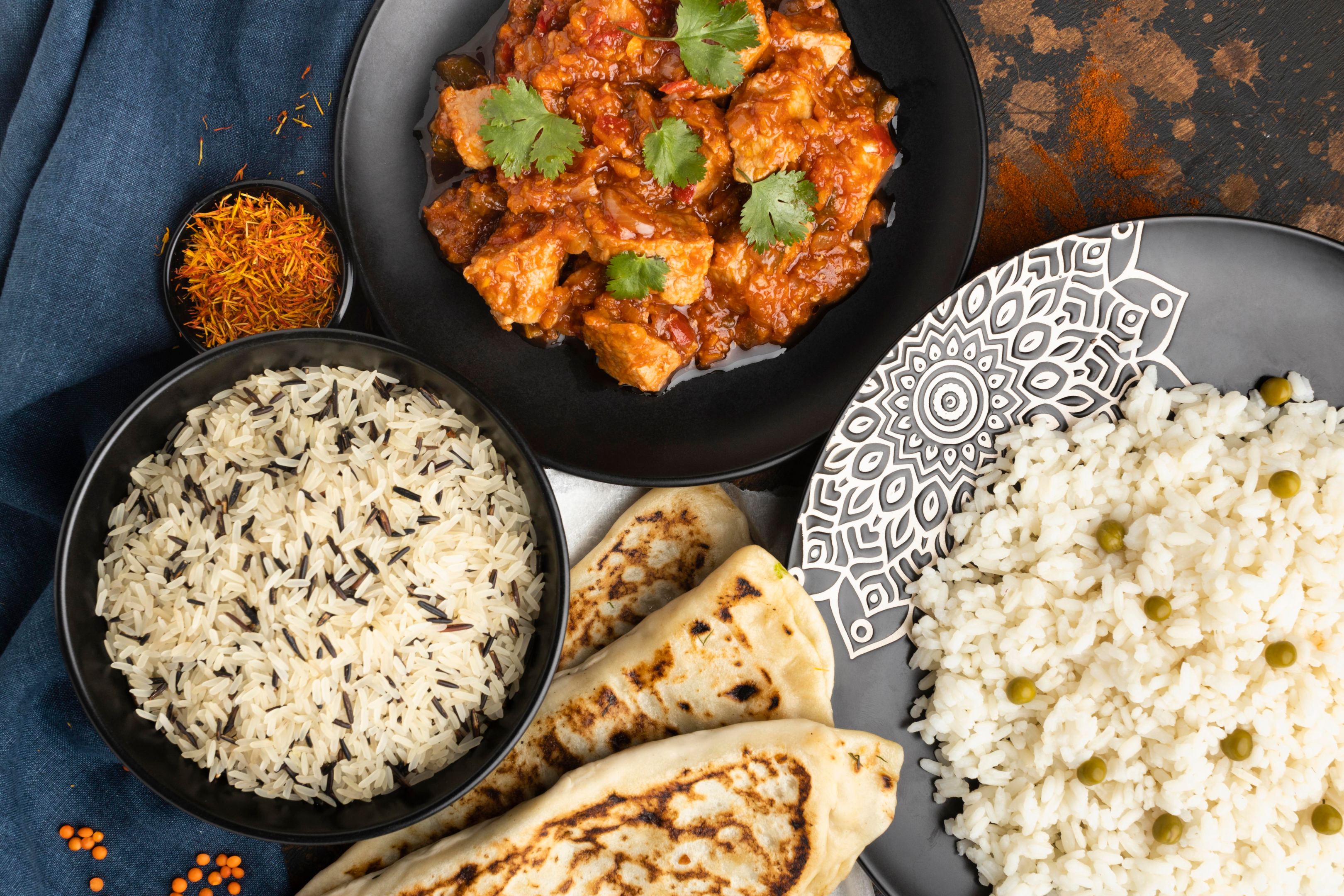
Recipe 3: Creamy Pork Korma
For those who prefer a milder option, this Creamy Pork Korma is a delightful choice. It features succulent pork in a smooth, mildly spiced and creamy sauce.
Ingredients:
- 2 lbs (900g) pork loin, cut into cubes
- 2 tbsp vegetable oil
- 2 large onions, pureed
- 4 garlic cloves, minced
- 2-inch piece of fresh ginger, grated
- 2 tbsp korma paste
- 1 cup heavy cream (or coconut milk for dairy-free)
- 1/2 cup ground almonds (optional)
- Salt and pepper to taste
- Fresh coriander, chopped (for garnish)
Cooking Instructions:
- Sauté Onions: Heat oil in a pot. Add pureed onions, garlic and ginger. Cook until golden.
- Add Pork and Spices: Add pork cubes and korma paste. Cook until pork is seared.
- Creamy Sauce Addition: After searing the pork, lower the heat and stir in the heavy cream or coconut milk for a dairy-free option. If using, also add ground almonds to thicken and enrich the sauce.
- Simmer to Perfection: Season with salt and pepper. Let the korma simmer gently, covered, for about 20-30 minutes, or until the pork is tender and the sauce is creamy and well-blended.
- Final Touches: Check for seasoning and adjust if necessary. The sauce should be thick, creamy and aromatic.
- Garnish and Serve: Sprinkle chopped coriander over the korma just before serving for a fresh note.
Serving Suggestions:
- Rice: Serve this creamy pork korma with a side of fragrant basmati rice, which will complement its rich flavours without overpowering the dish.
- Bread: For an authentic touch, pair it with warm, buttery naan or soft roti. These breads are perfect for scooping up the delicious sauce.
Presentation Tips:
- Plating: Serve the korma in a decorative bowl, garnished with coriander. You can also sprinkle some toasted almond flakes on top for an added crunch and visual appeal.
- Accompaniments: Arrange the rice or bread on the side in a visually appealing manner, perhaps using a mould for the rice to create an elegant shape.
- Colour Contrast: Add a small side salad with vibrant ingredients like cherry tomatoes, cucumber, and red onion for a pop of colour and a refreshing contrast to the creamy korma.
What goes into a Korma Paste?
Korma paste is a fragrant and richly flavoured blend of spices. Here's what typically goes into making a korma paste:
- Coriander Seeds: A sweet and citrusy spice that forms the base of many curry pastes.
- Cumin Seeds: Adds earthiness and a slightly spicy taste.
- Garam Masala: A blend of ground spices like cloves, cinnamon, cardamom and nutmeg, contributing warmth and depth.
- Turmeric Powder: Offers a vibrant yellow colour and a warm, bitter flavour.
- Ground Almonds or Cashews: Nuts add thickness to the paste and a subtle nutty sweetness.
- Garlic: Provides a strong, aromatic flavour.
- Ginger: Adds a sharp, peppery taste.
- Chilli Powder: Used sparingly for a hint of heat.
- Cinnamon: Adds sweetness and warmth.
- Cardamom: Contributes a complex, slightly sweet flavour.
- Cloves: Brings a strong, sweet and aromatic taste.
- Yoghurt: Often included to create a creamy texture and to balance the spices.
- Tomato Paste: Sometimes used for a bit of tanginess and colour.
- Oil or Ghee: Used as a base to blend these ingredients into a smooth paste.
- Salt: To taste.
Korma emphasises aromatic and warm spices rather than the heat found in other Indian curry pastes. The specific spice mix can vary based on regional and personal preferences, but the essence of korma paste is its fragrant and indulgent character, making it a staple in many Indian and South Asian kitchens.
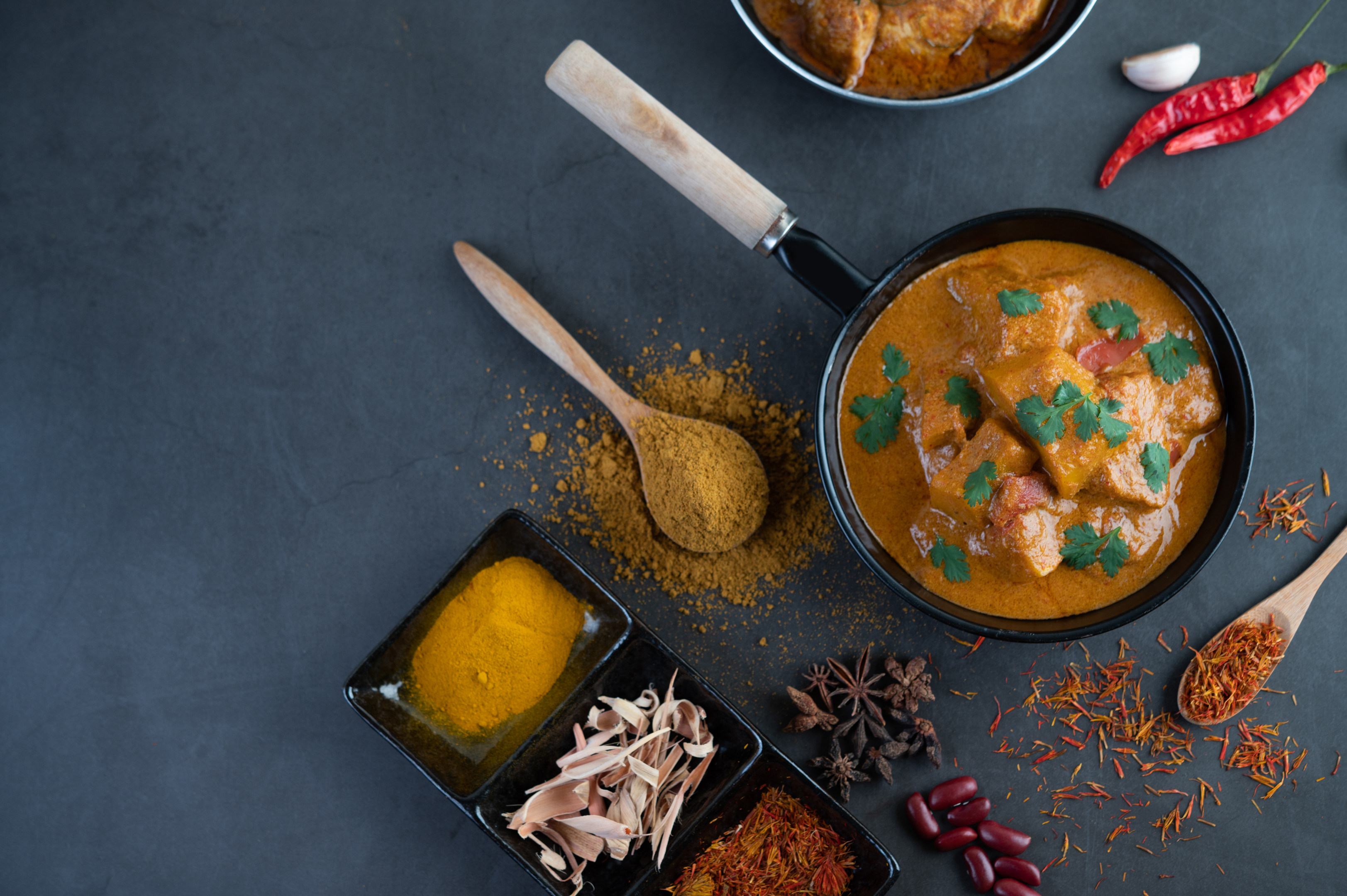
Where Can I Buy Specially Selected Pork Near Me?
If you have been inspired to reach for your spice cupboard and try your hand at making some amazing homemade pork curries, look no further for your fresh pork than Specially Selected Pork!
You can now easily find premium quality pork and Scotch meat where you live! Simply enter your postcode into our user-friendly map, and it will guide you to your nearest Scotch meat supplier and you will be cooking up a storm in no time at all!
Show Your Support to Scottish Farmers
By purchasing Specially Selected Pork you are not only cooking with outstanding quality and nutritionally rich meat, but are also supporting a community of dedicated local farmers whose passion for rearing animals in traditional and holistic ways spans generations!
These local heroes are the guardians of the pristine Scottish landscape and its traditions and they are champions of sustainability. It is their unwavering commitment to upholding the highest quality standards and excellence that sets the Scottish red meat industry apart.
What's The Scotch Difference?
Let us take you on a journey into what makes Scotch Beef, Scotch Lamb and Specially Selected Pork so special, and how we produce such high-quality meat renowned and enjoyed worldwide.


- © MakeitScotch 2026
- Cookies
- Privacy
- Terms of Use
Site by Art Department
